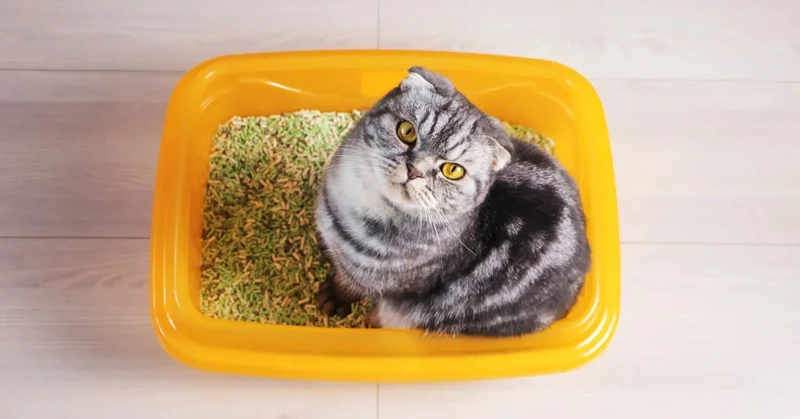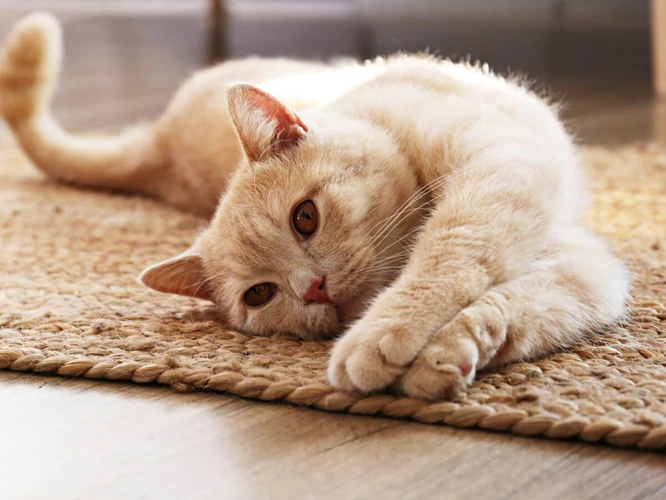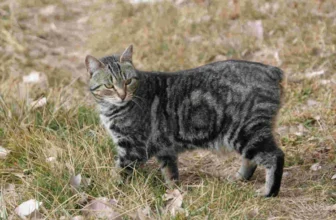You’ve noticed something’s not right with your beloved American Shorthair cat – maybe they’re meowing more than usual or having trouble using the litter box. It could be a sign of urinary tract issues, a common problem among feline breeds. But don’t worry, this article is here to help you understand what urinary tract issues are and why American Shorthair cats are prone to them. We’ll also discuss ways to prevent these issues from occurring and how to treat them if they arise. Let’s get started and keep your furry friend happy and healthy!
Understanding Urinary Tract Issues in American Shorthair Cats

Urinary tract issues are common health problems in American Shorthair cats. Understanding the causes and symptoms of these issues is essential to ensure proper treatment and prevention.
What Are Urinary Tract Issues?
Urinary tract issues refer to a set of conditions that affect the urinary system of a cat. These conditions can include urinary tract infections, bladder stones, and urinary blockages. Urinary tract infections occur when bacteria enter the cat’s urinary system and cause an infection. Bladder stones can form due to the buildup of minerals in the bladder. Urinary blockages can occur when the urethra becomes blocked, usually due to the presence of bladder stones or mucus buildup.
Why Are American Shorthair Cats More Prone to Urinary Tract Issues?
American Shorthair cats are more prone to urinary tract issues due to several factors. Some of the primary factors include their genetic predisposition, a high protein diet, and a sedentary lifestyle. Additionally, male American Shorthair cats, in particular, are more likely to develop urinary tract issues than female cats.
What Are the Signs of Urinary Tract Issues in American Shorthair Cats?
It’s crucial to recognize the signs of urinary tract issues to ensure timely treatment. The most common signs of urinary tract issues in American Shorthairs include frequent urination, difficulty urinating, blood in the urine, and pain while urinating. Other symptoms may include lethargy, loss of appetite, and vomiting.
To learn more about maintaining a healthy lifestyle for your American Shorthair cat, (insert internal link to /healthy-american-shorthair-cat/). To learn how regular vet checkups can contribute to their overall well-being, check out our article on (insert internal link to /vet-checkups-american-shorthair-cats/).
What Are Urinary Tract Issues?
Urinary tract issues can be defined as an array of conditions that affect any part of the urinary tract system in cats. These issues can range from minor irritations that can be easily treated to more serious problems such as infections, bladder stones, and even urethral obstruction. Urinary tract issues can affect American Shorthair cats of all ages and genders, but they are more commonly observed in males. If left untreated or not recognized in time, these conditions can lead to life-threatening illnesses. It is crucial for pet owners to keep an eye out for any symptoms of urinary tract issues in their cats. Some potential causes of urinary tract issues in American Shorthair cats include stress, a poor diet, genetics, and low water intake. To learn more about common health issues faced by American Shorthair cats, check out our article on American Shorthair Cat Health Issues.
Why Are American Shorthair Cats More Prone to Urinary Tract Issues?
American Shorthair cats are more prone to urinary tract issues than other breeds, partly due to their genetics. Research has found that this breed has a higher likelihood of developing bladder stones and urinary tract blockages than other breeds. These issues can lead to painful urination, discomfort, and even life-threatening complications if left untreated.
In addition to genetics, there are several other factors that contribute to the increased risk of urinary tract issues in American Shorthair cats. For example, these cats have a tendency to not drink enough water, which can lead to concentrated urine that irritates the bladder and urinary tract. Obesity is also a common issue among American Shorthair cats, and it has been linked to an increased risk of urinary tract issues. This is because extra body weight can put pressure on the bladder and urinary tract, making it harder for cats to fully empty their bladders.
Furthermore, stress can also be a major contributing factor to urinary tract issues in cats. American Shorthair cats are known for being independent and adaptable pets, but changes in their routine or environment can cause them to feel anxious or stressed. This can lead to a decrease in their immune system’s ability to fight off infections, making them more susceptible to urinary tract infections.
To prevent urinary tract issues in American Shorthair cats, it’s important to address these underlying causes. Providing clean and fresh water at all times, feeding a balanced diet, encouraging exercise, and keeping the litter box clean can all help reduce their risk of developing urinary tract issues. Regular vet check-ups are also important for monitoring any early signs of urinary tract problems.
If your American Shorthair cat is experiencing urinary tract issues, it’s essential to seek veterinary care promptly. Your vet may prescribe medications to relieve pain and inflammation, or recommend changes to your cat’s diet and environment to reduce their risk of recurrence. Monitoring your cat’s condition closely and keeping a close eye on any changes in their behavior or bathroom habits can also help prevent future urinary tract issues.
If you’re concerned about your American Shorthair cat’s health, it’s important to stay informed and seek veterinary care when necessary. With proper prevention and treatment, you can help keep your furry friend healthy and happy for years to come.
What Are the Signs of Urinary Tract Issues in American Shorthair Cats?
Urinary tract issues can be difficult to detect in American Shorthair (AS) cats because they have a tendency to hide their pain or discomfort. However, there are several signs that may indicate that your AS cat is suffering from a urinary tract issue. One of the most common signs is a frequent urge to urinate, but only passing small amounts of urine. Your cat may also strain while urinating, cry out in pain, or lick excessively around the genital area. In some cases, your cat may also display signs of depression, lethargy, or loss of appetite.
Another important symptom to watch out for is frequent urination outside the litter box. This could be a sign that your cat is associating the litter box with pain or discomfort. Blood in the urine is also a possible indication of a urinary tract issue and requires immediate veterinary attention.
Some of these symptoms may also indicate other health issues such as arthritis, diabetes, or allergies. That’s why it’s crucial to schedule regular vet check-ups and monitor your cat’s behavior and overall health. It’s also important to stay alert if your AS cat has any genetic health issues, special dietary needs, or dental problems, as they can sometimes increase the risk of urinary tract issues.
Recognizing the signs of urinary tract issues in American Shorthair cats is vital to maintaining their health and well-being. Keep an eye out for these symptoms and seek prompt veterinary attention to prevent any further complications.
Preventing Urinary Tract Issues in American Shorthair Cats

Preventing Urinary Tract Issues in American Shorthair Cats
Urinary tract issues in cats can be painful and expensive to treat, so it’s important to take steps to prevent them from occurring in the first place. Here are some tips for preventing urinary tract issues in American Shorthair Cats:
Provide Clean and Fresh Water: Make sure your American Shorthair Cat always has access to clean and fresh water. Dehydration can lead to urinary tract issues, so encourage your cat to drink water regularly.
Offer a Balanced Diet: Feeding your cat a high-quality, balanced diet is essential to keeping them healthy and avoiding urinary tract issues. Look for cat food that is specifically formulated for urinary health. You might want to consult with your veterinarian regarding your cat’s unique dietary needs.
Encourage Exercise: Exercise helps keep cats healthy and can prevent urinary tract issues. Encourage your American Shorthair Cat to play and provide toys that will engage them in physical activity.
Keep the Litter Box Clean: A dirty litter box can lead to urinary tract issues, as cats are less likely to use a litter box that is not clean. Clean the litter box daily and make sure you have enough litter boxes for all your cats.
Take Your Cat to Regular Vet Check-Ups: Regular check-ups with your veterinarian can help catch any potential health issues before they become serious. Your veterinarian can also recommend specific preventive measures based on your cat’s unique needs.
By following these tips, you can help ensure that your American Shorthair Cat stays healthy and avoids urinary tract issues. Remember that these preventive measures are often much less expensive and less invasive than treating health issues that may arise. However, if you suspect your cat is experiencing urinary tract issues, it’s important to consult your veterinarian right away to avoid complications.
To learn more about dietary needs and health issues of American Shorthair Cats, please see our article about special dietary needs.
Provide Clean and Fresh Water
Clean and fresh water is crucial for preventing urinary tract issues in American Shorthair cats. Water helps flush out toxins and bacteria from the urinary tract, keeping it healthy. Dirty or stale water can lead to dehydration and urinary tract infections, which can be painful and even life-threatening for your cat. Make sure to provide your cat with fresh, clean water every day, and consider investing in a pet water fountain to encourage regular drinking.
It’s important to note that some cats may be picky about their water source. They may prefer running water or a certain type of bowl. Experiment with different types of bowls and water sources to see what your cat likes best. Remember that cats have a low thirst drive and may not drink enough water on their own, so it is your responsibility to make sure they have access to enough fresh water throughout the day.
If you have multiple cats in your household, make sure to provide multiple water sources to prevent competition for resources. Also, keep your cat’s water bowl away from their litter box and feeding area to avoid contamination and promote hygiene.
While providing clean and fresh water is essential for preventing urinary tract issues, it is also important to take a holistic approach to your cat’s overall health. Regular vet check-ups, a balanced diet, exercise, and a clean environment can all contribute to a healthy urinary tract and prevent other health issues such as genetic health issues, arthritis, dental issues, allergies, and diabetes, among others.
Offer a Balanced Diet
An essential step in preventing urinary tract issues in American Shorthair cats is to offer a balanced and healthy diet. A diet that contains too many grains and not enough meat can create imbalances in your cat’s system, leading to urinary tract problems. Additionally, excess weight can also lead to urinary tract issues and other health problems in cats. It’s important to choose a diet that is high in protein and low in carbs.
Feeding your cat wet food is an excellent way to help prevent urinary tract problems. Wet food can help keep your cat properly hydrated, which is crucial in maintaining a healthy urinary tract. If you prefer feeding dry food, make sure your cat has access to plenty of fresh water throughout the day, as this will encourage him to drink and stay hydrated.
When selecting a diet for your American Shorthair cat, it’s also important to consult with your veterinarian first. Your veterinarian can recommend the best type of food for your cat’s specific needs. If your cat already suffers from urinary tract issues, your veterinarian may recommend a special diet that is designed to prevent the formation of crystals or stones in the urinary tract.
In addition to offering a balanced and healthy diet, consider making dietary supplements a part of your cat’s routine. Supplements like cranberry extract can help prevent urinary tract infections and reduce inflammation. However, before giving your cat any supplements, it’s important to consult with your veterinarian first.
It’s worth noting that a healthy and balanced diet not only helps prevent urinary tract issues, but also other health problems in American Shorthair cats, such as arthritis, dental problems, and allergies. Investing in a good diet is crucial in keeping your American Shorthair cat healthy and happy.
Encourage Exercise
One important way to prevent urinary tract issues in American Shorthair cats is to encourage exercise. This breed can be prone to obesity, which can increase the risk of urinary tract problems. Obesity also puts a strain on the urinary system in general. Regular exercise can help keep your cat at a healthy weight and reduce the risk of urinary tract issues.
You don’t need to take your cat for long runs or walks like a dog to encourage them to exercise. Instead, try providing toys that promote physical activity, such as a feather wand or toy mouse. You can also place shelves or cat trees at different heights around your home to create a fun and interactive play area for your cat. This not only encourages your cat to be more active but also stimulates their natural hunting instincts, which can help reduce stress and anxiety.
Another great way to encourage exercise is to play interactive games with your cat, such as laser pointer or hide-and-seek. This not only gets them moving but also provides mental stimulation. While it’s important to provide exercise opportunities, be mindful not to overdo it, as too much exercise can cause fatigue and dehydration, which can, in turn, increase the risk of urinary tract problems. Encourage playtime in moderation, and always provide plenty of fresh water to keep your cat hydrated.
Remember that every cat is different, and what works for one may not work for another. Experiment with different toys and games to see what your cat prefers and what gets them moving the most. Regular exercise in combination with a balanced diet and regular veterinarian check-ups can help prevent urinary tract issues and keep your American Shorthair cat happy and healthy for years to come.
Keep the Litter Box Clean
Ensuring that your American Shorthair cat has access to a clean litter box is crucial in preventing urinary tract issues. Cats are known for being meticulous groomers, and they expect the same level of cleanliness from their surroundings. A dirty litter box can lead to stress and discomfort for your cat, which can exacerbate any existing urinary tract issues.
Make sure to scoop out the litter box at least once a day, and completely change the litter at least once a week. It’s also important to use a litter that your cat approves of. Some cats have preferences for certain types of litter, such as unscented or clumping. Experiment with different types of litter until you find the one that your cat likes best.
In addition to frequent cleaning, pay attention to the location and accessibility of the litter box. Your cat should be able to easily access the litter box at all times without feeling threatened or uncomfortable. Avoid placing the litter box in high-traffic areas or near loud appliances. Instead, opt for a quiet and private location.
Consider providing multiple litter boxes if you have multiple cats. This can help prevent territorial disputes and ensure that each cat has access to a clean litter box. If you notice your cat avoiding the litter box, it may be a sign of a urinary tract issue or an issue with the litter box itself. Consult with your veterinarian to rule out any medical issues and make any necessary changes to your litter box routine.
Keeping the litter box clean and accessible is key in preventing urinary tract issues in American Shorthair cats. Scoop the litter box daily, change the litter weekly, provide a private location, experiment with different types of litter, and consider providing multiple litter boxes if needed. By following these tips, you can help ensure that your American Shorthair cat maintains their urinary tract health.
Take Your Cat to Regular Vet Check-Ups
Regular check-ups with a veterinarian are crucial for maintaining your American Shorthair cat’s health and preventing urinary tract issues. During these check-ups, your vet will be able to assess your cat’s overall health and detect any potential issues early on, before they become more serious and harder to treat.
It is recommended to take your cat to the vet at least once a year for a routine check-up, even if they seem to be perfectly healthy. During these visits, your vet can perform a physical exam and various tests to check your cat’s urine and blood. These tests can help detect any signs of urinary tract issues, such as bladder stones, infections, or inflammation.
If your cat has a history of urinary tract issues, it may be recommended to have more frequent check-ups, such as every 6 months. This is particularly important for older cats, as they are more prone to developing urinary issues.
Additionally, regular vet check-ups also allow you to discuss any concerns or questions you may have about your cat’s health and well-being. Your vet can provide helpful advice on how to maintain a healthy diet, exercise routine, and environment for your cat.
Skipping regular vet check-ups can lead to untreated urinary tract issues, which can be very painful and stressful for your cat, and potentially life-threatening if left untreated. It is crucial to make sure you make these check-ups a priority for your cat’s health and happiness.
Treating Urinary Tract Issues in American Shorthair Cats
Dealing with urinary tract issues in American Shorthair Cats can be a daunting task, but it’s important to act quickly if you notice any signs of discomfort or pain. Treating urinary tract issues requires a multifaceted approach and may involve consulting with a veterinarian, administering medication, and making changes to your cat’s diet and environment.
Consult Your Vet: If you notice any signs of urinary tract issues in your American Shorthair Cat, it’s important to seek veterinary care as soon as possible. Your vet can perform a physical examination, run diagnostic tests, and determine the best course of treatment for your cat’s specific needs. In some cases, your vet may recommend hospitalization so that your cat can receive IV fluids or other treatments.
Administer Medication as Prescribed: Depending on the severity of the urinary tract issue, your vet may prescribe medication to help alleviate your cat’s symptoms. It’s important to administer the medication as prescribed and to monitor your cat closely for any changes in behavior or response to the medication.
Make Changes to Your Cat’s Diet and Environment: Making changes to your cat’s diet and environment can help prevent future urinary tract issues. Your vet may recommend a special diet that helps promote urinary tract health or suggest changes to your current feeding schedule. Additionally, making sure your cat has access to clean litter boxes and fresh water can help prevent urinary tract infections.
Make Sure Your Cat Drinks Plenty of Water: One of the most important things you can do to help prevent urinary tract issues in your American Shorthair Cat is to make sure they are drinking plenty of water. This helps flush out their urinary system and prevents the formation of crystals or stones.
Monitor Your Cat’s Condition Closely: After starting treatment, it’s important to monitor your cat’s condition closely for any changes. Watch for signs of improvement or worsening symptoms and report any concerns to your vet. By staying in close communication with your vet and monitoring your cat’s health, you can help ensure a successful recovery and prevent future urinary tract issues.
Consult Your Vet
If you believe your American Shorthair cat is experiencing urinary tract issues, the first step you should take is to consult your vet. Your vet will be able to diagnose the issue and recommend the best course of treatment. It’s essential to schedule a visit with your vet as soon as possible because urinary tract issues, if left untreated, can lead to serious health problems.
During your visit, your vet will likely perform a physical examination of your cat and ask you questions about their symptoms. Your vet may also recommend diagnostic tests like blood work and urinalysis to get a better understanding of your cat’s condition.
It’s important to be transparent with your vet about your cat’s habits and behavior. Urinary tract issues can be caused by a variety of factors like stress, diet, and environmental changes. Being open and honest with your vet can help them pinpoint the underlying cause of your cat’s issues and recommend an appropriate treatment plan.
Remember, your vet is the expert when it comes to your cat’s health. As perplexing as it may be, it’s crucial to trust their advice and follow their recommendations for your cat’s well-being. Don’t be afraid to ask questions or seek a second opinion if you’re uncertain about your vet’s recommendations.
Consulting with your vet is the first and most essential step in dealing with urinary tract issues in American Shorthair cats. Make sure to schedule regular vet check-ups for your cat and act promptly if you suspect that they may be experiencing health problems.
Administer Medication as Prescribed
Giving medication to your American Shorthair cat can be a daunting task, but it is important to administer medication as prescribed by your vet. Giving medication on time and in the correct dosage can make a huge difference in your cat’s recovery from urinary tract issues.
Follow Instructions: When your vet prescribes medication for your cat, make sure you understand how it should be given. Ask any questions you have and read the instructions carefully. If you are unsure about anything, contact your vet for guidance.
Ensure Proper Dosage: Administering the correct dosage is crucial for your cat’s health. Use a measuring device, such as a syringe or dropper, to measure the medication accurately. Never guess or estimate the dosage, as this can result in under-dosing or overdosing.
Timing is Important: Be sure to give medication at the right time. If you miss a dose, do not double up on the next one. Instead, follow the instructions provided by your vet on what to do if you miss a dose.
Consider the Form: Some medications come in different forms, such as pills, liquids, or injections. If your cat is difficult to give pills to, ask your vet if there is a liquid or injectable form available. It is important to keep in mind, however, that not all medications have alternative forms and sometimes there isn’t another option.
Stay Consistent: Consistency is key when it comes to medication. Stick to the schedule as closely as possible and don’t stop giving medication early. If you notice negative side effects, contact your vet immediately, instead of discontinuing the treatment.
By following your vet’s instructions and administering medication as prescribed, you can help your American Shorthair cat recover from urinary tract issues as quickly as possible. Be sure to keep track of your cat’s progress and report any changes or concerns to your vet, so that they can adjust the treatment if necessary.
Make Changes to Your Cat’s Diet and Environment
When dealing with urinary tract issues in American Shorthair cats, making changes to their diet and environment can play a crucial role in their recovery process. One of the first steps you can take is to switch your cat’s diet to a specialized one that is designed for urinary health. Foods with high levels of magnesium, phosphorus, and other minerals can increase the risk of urinary tract problems. Instead, opt for a diet with high moisture content, lower mineral levels, and the right balance of nutrients. You may also want to consider adding urinary supplements recommended by your vet.
Along with diet, making changes to your cat’s environment can also help prevent future occurrences of urinary tract issues. Stress can be a major contributing factor to urinary problems in cats. Creating a calm and comfortable environment for your cat can work wonders in reducing stress levels. This can be achieved by providing your cat with hiding spots, scratching posts, and plenty of comfortable resting areas.
Another aspect to consider is litter box placement. Cats can be quite picky about where they do their business, and any discomfort or anxiety caused by a poorly placed litter box could lead to urinary issues. Ensure that the litter box is located in a quiet and accessible area, away from noisy appliances, and has sufficient space for your cat to move around.
Additionally, it’s worth considering the type of litter you’re using. Some cats may be sensitive to certain types of litter, causing discomfort and discouraging them from using the litter box. Switching to a hypoallergenic and dust-free litter could make all the difference in your cat’s urinary health.
Making changes to your cat’s diet and environment can significantly improve their urinary health and prevent future problems. consulting with your vet to explore additional diet and lifestyle changes may be necessary to ensure your cat’s well-being.
Make Sure Your Cat Drinks Plenty of Water
It is important to ensure that your American Shorthair cat drinks plenty of water when they have urinary tract issues. This is because proper hydration can help dilute the urine and flush out any harmful substances that may contribute to the formation of urinary crystals or stones. Additionally, it can help reduce inflammation and the risk of infection in the bladder or kidneys.
One way to encourage your cat to drink more water is by providing them with fresh water constantly. This means replenishing their water bowl with clean water at least once or twice a day. It is also important to make sure that the water bowl is placed in a convenient location that is easily accessible to your cat.
Another option is to offer a wet food diet to your American Shorthair cat. Wet food has a higher moisture content compared to dry food, which can help increase your cat’s water intake and keep them hydrated. However, it is important to choose a high-quality wet food that is formulated specifically for cats with urinary tract issues and to consult with your veterinarian first before making any dietary changes.
You can also add sodium-free chicken broth or water to your cat’s meals to help them stay hydrated. This is especially helpful if your cat is resistant to drinking plain water. However, make sure to gradually introduce any dietary changes to your cat and monitor their condition closely to ensure that they are tolerating the changes well.
Making sure that your American Shorthair cat drinks plenty of water is an essential part of managing their urinary tract issues. By providing them with fresh water, wet food, or adding sodium-free chicken broth to their diet, you can help keep them well-hydrated and support their overall urinary tract health.
Monitor Your Cat’s Condition Closely
After consulting your veterinarian and administering the prescribed medication to treat your American Shorthair’s urinary tract issues, it’s important to monitor your cat’s condition closely. Keep an eye out for any recurring symptoms or signs of discomfort, such as straining to urinate, frequent urination, or blood in the urine.
Observe your cat’s behavior: Watch your cat’s behavior closely to make sure that they are urinating regularly and without any issues. Any changes in their behavior, such as avoiding the litter box or crying out when they urinate, could be a sign that their urinary tract issues have not been fully resolved.
Check the litter box: Make sure that your cat is using the litter box regularly and producing normal-sized urine clumps. If you notice any abnormal or small clumps, there may be an issue with your cat’s urinary tract.
Monitor water intake: Make sure that your cat is drinking plenty of water to help keep their urinary tract healthy. If you notice that they aren’t drinking as much water as usual, try changing the location or type of water dish to encourage them to drink more.
Follow-up appointments: It’s crucial to attend any follow-up appointments with your veterinarian to make sure that your American Shorthair’s urinary tract issues are fully resolved. Your vet may recommend additional tests or procedures to make sure that there are no underlying issues contributing to your cat’s condition.
Monitoring your cat’s condition closely is crucial to ensuring that any urinary tract issues are fully resolved and don’t reoccur. By observing your cat’s behavior, checking the litter box, monitoring their water intake, and attending follow-up appointments with your veterinarian, you can help keep your American Shorthair healthy and happy for years to come.
Conclusion
After understanding the risk factors, signs, and preventive measures of urinary tract issues in American Shorthair cats, it’s clear that the well-being of our feline friends depends on our attention and care. Providing clean water, a balanced diet, and a clean litter box can go a long way in preventing urinary tract issues. Encouraging exercise and regular vet check-ups can also help in keeping these issues at bay.
In the event that you notice any signs of urinary tract issues in your American Shorthair cat, it’s important to promptly consult with your vet and administer medication as prescribed. Making changes to your cat’s diet and environment and ensuring adequate hydration can also aid in the treatment process.
Caring for a cat with urinary tract issues can pose a challenge, but it’s important to remember that with patience and close monitoring, it’s possible to help your cat recover and prevent future issues. In conclusion, with the right care and attention, we can help our American Shorthair cats live healthy and happy lives. So, as a responsible pet owner, make sure to maintain a safe and healthy environment for your furry friend and provide them with the best possible care.
Frequently Asked Questions
What causes urinary tract issues in American Shorthair cats?
Urinary tract issues in American Shorthair cats can be caused by a variety of factors, including diet, genetics, and lifestyle. Some common causes include bacterial infections, bladder stones, and urinary tract obstructions.
Can male and female American Shorthair cats both develop urinary tract issues?
Yes, both male and female American Shorthair cats can develop urinary tract issues, although male cats are more prone to developing life-threatening urinary blockages.
How can I prevent my American Shorthair cat from developing urinary tract issues?
You can prevent urinary tract issues in American Shorthair cats by offering them a balanced diet, providing them with clean and fresh water, encouraging exercise, keeping the litter box clean, and taking them to regular vet check-ups.
What are some signs that my American Shorthair cat may have a urinary tract issue?
Some signs that your American Shorthair cat may have a urinary tract issue include urinating outside of the litter box, straining to urinate, crying out in pain while urinating, and licking their genital area excessively.
Can I treat my cat’s urinary tract issues at home?
It is not recommended to treat your cat’s urinary tract issues at home without first consulting with a veterinarian. Many of these issues require medical attention and could be worsened by attempting to treat them at home.
What should I do if I suspect my American Shorthair cat has a urinary tract issue?
If you suspect your American Shorthair cat has a urinary tract issue, you should bring them to a vet immediately for an assessment and treatment options.
What are the treatment options for urinary tract issues in American Shorthair cats?
Treatment options for urinary tract issues in American Shorthair cats depend on the underlying cause of the problem. Some treatments include medication, changes to diet and environment, and surgery in severe cases.
Can diet have an impact on urinary tract issues in American Shorthair cats?
Yes, diet can play a significant role in preventing and managing urinary tract issues in American Shorthair cats. A diet that is high in moisture and low in ash and magnesium can help reduce the risk of bladder stones and other urinary tract problems.
Is there anything I can do to help my cat feel more comfortable while recovering from a urinary tract issue?
Yes, you can help your cat feel more comfortable while recovering from a urinary tract issue by keeping them hydrated, providing a clean and comfortable place to rest, and avoiding activities that may cause them pain or discomfort.
Can urinary tract issues in American Shorthair cats be life-threatening?
Yes, urinary tract issues in American Shorthair cats can be life-threatening, particularly in male cats who are prone to developing urinary blockages. Any suspected urinary tract issue should be addressed promptly by a veterinarian.







